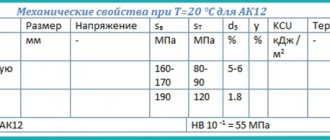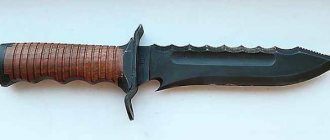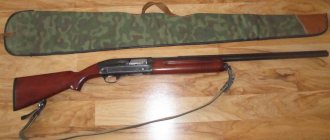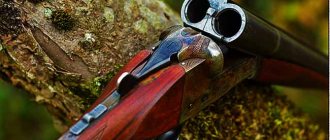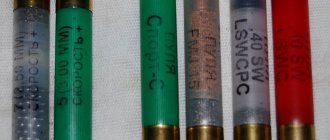Damask steel (vuts, taban, khorasan, farand) was known several thousand years ago. This material is distinguished by a complex production process, in which it is necessary to strictly observe the chemical composition of the alloy and provide a unique processing technology. All this allows us to obtain a material with excellent performance characteristics, which have not lost their relevance today, despite the abundance of various alloys and the use of a wide range of alloying elements.
Blade blank made of damask steel.
Historical reference
Swords and knives made of damask steel appear in fairy tales and real historical references in many countries.
A damask knife was always more expensive than a regular one, since it gave a real advantage in battle.
A little about ancient damask steel
Damask steel is an excellent choice for knives. It is an alloy of iron and carbon without additional alloying additives. But the high carbon content (almost like cast iron) makes it possible, after heat treatment, to obtain a hardness of up to 64 HRC.
Another nuance - after etching, a damask blade has a characteristic beautiful pattern. That is why ancient damask steel in India, which is the birthplace of this alloy, was called Indian patterned steel - in ancient times it cost a fortune.
The masters kept the secret of damask steel within the caste, but after Timur came to Syria, the captured masters moved to Samarkand with their secrets.
It was there that the ancient technologies for producing high-quality damask steel were completely lost.
Bulat steel P.P. Anosova
Many specialists tried to restore the technical process of steel production with similar characteristics. Pavel Petrovich Anosov finally succeeded.
The mining chief of the Zlatoust factories was actively interested in what damask steel was and how it could be produced on its own. A targeted study of this issue yielded results in 1837.
Anosov damask steel.
Anosov developed several technologies, including melting scraps in clay pots in high-temperature furnaces.
Return of a Legend
The open secret of damask steel production was again lost at the beginning of the 20th century. The next round of interest in technology began already in the Soviet period.
Zlatoust metallurgist Sergei Baranov was able to repeat Anosov’s feat. A series of test melts made it possible to achieve the desired result, which confirmed the corresponding conclusion of the Russian Academy of Sciences.
Chemical composition and properties of damask steel
Bulat steel remains an alloy of iron and carbon. The latter is up to 2%. Strength characteristics are achieved not by alloying additives, but by special manufacturing technology. Every detail matters. Especially the temperature. Therefore, for the production of damask steel, instead of high-performance metallurgical furnaces heated by gas or electricity, wood-burning furnaces are used.
Nothing will come of an overheated alloy. Using another technology, steel layers were welded together. Not by electric arc or gas welding, but in the process of repeated reforging. This is how blades were made in Damascus, Japan. Traces of layers give a unique pattern on the blade.
Damask steel amazingly combines strength and elasticity. Knives made from it bend, but do not break. The blade can be brought to a razor sharpness. Holds an edge perfectly. Hardness on the Rockwell scale reaches 64 units.
The difference between crucible damask steel and cast steel
Now damask steel is produced using several technologies - the materials are generally identical, but they also have a number of differences:
- When producing a crucible alloy , iron ore, charcoal and a special flux are heated in special crucibles - smelting is performed in wood furnaces (compared to gas or electric furnaces, they do not provide such a high temperature). The technology is costly, but that's what makes blades for collectors.
- Products made from cast damask steel are simpler; they can be found at sales in Moscow. The raw material for steel is not iron ore, but special grades of low-carbon steel. It is easy to distinguish such damask steel - the pattern on the steel is not so pronounced , but the properties of the knives are practically the same.
Of course, the price of cast material is several times lower.
Damask steel blade.
Advantages and disadvantages
In modern conditions, damask steel is more interesting from the point of view of small-scale production. Many grades of steel have been developed that have superior characteristics to this one. In the era of firearms, swords and knives have become objects of attention for collectors.
Damask steel is durable, retains the sharpness of the cutting edge, and is almost impossible to break. At the same time, production technologies have made it possible to reduce the cost of products. You will no longer have to give up half your kingdom, as in ancient times, for a damask dagger.
These were the advantages. And now about the shortcomings. It is almost impossible to sharpen a carbide at home: you need a special diamond whetstone. The owner of damask steel must be prepared for the fact that the blade is susceptible to rust. And in comparison with products made from other steel grades, the price of this one will be significantly higher.
What is damask steel and its characteristics
The properties of damask steel are determined by the carbon content in the alloy - it is approximately 2%, so that the steel retains its elasticity and hardness. But the material gets its special properties precisely because of the melting temperature - if the raw materials are overheated, then such steel will not work.
The technical process for producing welded damask steel, that is, Damascus, is more complicated, but cheaper in cost. When producing a knife, it is necessary to connect packages of metal (preferably with different carbon content) together by forge welding, which allows you to obtain not a monolithic, but a multilayer structure.
pros
The main advantages of damask steel are:
excellent cutting properties;
high resistance to impact and bending loads;
high hardness and wear resistance;
Once you sharpen a knife, you can use it for a long time - damask steel holds an edge well.
Minuses
Everything in our world is not perfect:
expensive material;
difficult to sharpen due to the hardness of the steel;
does damask steel rust? - Yes. Corrosion resistance is low.
In fact, damask blades are of more interest to collectors , since among modern steels there are more technologically advanced options and at the same time more affordable.
Advantages and disadvantages
2,500 years ago, the material impressed with its exceptional characteristics - unprecedented hardness and flexibility. Users did not find any shortcomings in it. In the modern world, when metalworking technology and knowledge about the chemical composition of metals have stepped far forward, the pros and cons of damask steel are almost equivalent. The table contains a list of the main advantages and disadvantages of knives made from this material.
| Advantages | Flaws |
| Impressive cutting properties | Poor corrosion resistance |
| Increased resistance to impact and bending | Extremely high price |
| High hardness values | Difficulties of sharpening |
| Excellent wear resistance | A huge number of fakes |
| Long lasting blade sharpness | The sharpness of the blade is not much inferior to modern alloys |
Despite the negative characteristics of the metal, knives made from this rare alloy are still highly valued. The products have grown into a status item, the possession of which is equivalent to having a collectible gun or a rare coin . That is why such knives can often be seen in the luxury souvenir department.
Today, no one is forging damask steel using ancient technologies, otherwise the cost of the product, taking into account all costs, would be approximately equal to the price of a used foreign car. The use of the latest technologies does not make the product worse, but it allows more precise control of the temperature, the chemical composition of the steel, and the dosage of carbon addition. We can say with confidence that a modern damask steel knife is noticeably more reliable, stronger and more durable than its predecessors, and severe susceptibility to corrosion is eliminated by simply alloying the blade.
Main types of knives and scope of application
Damask steel is used in the manufacture of the following types of knives:
- all-metal,
- with fixed blade,
- folding.
As for the scope of application, the models can be divided into knives for hunting, fishing, tourists, and military. Throwing models and collectible weapons stand separately.
Knives for collectors can be very expensive - valuable wood, precious stones, metals, natural horn are used to make them, not to mention the manual work on each knife.
Knife made of damask steel.
The best Russian masters of damask knives
It is believed that products made of alloy steel compete with damask knives in the modern market. But is this really so, and are there craftsmen in Russia today capable of making forged knives that have no equal in quality? It turns out there is. The secret of high-quality damask steel is held by such masters as I. Pampukha and A. Biryukov. Their products are famous not only in Russia, but also abroad.
Blacksmith I. Pampukha has been famous in Russia for his knives made of damask and Damascus steel for almost two decades. A master blacksmith in the third generation, he is one of the few who keeps the secret of real damask steel and follows all the necessary technologies for forging, casting and sharpening. His stainless steel knife, made using modern technology, retains the properties of classic steel and is highly resistant to corrosion. His hunting knives, having passed the test for cutting and blade strength upon impact, showed that the damask steel of his production is much superior to the alloy steel of knife blades from leading manufacturing companies. The knives of I. Pampukha also deserve the title of highly artistic execution. For the handles, the master chooses not only such expensive materials as walrus tusk and ebony, but also decorates them with precious stones and mother-of-pearl inlay.
Andrey Biryukov's forge is also famous for its tradition of high-quality damask knives, which are distinguished by high cutting quality and resistance to corrosion. However, not only these qualities, but also quite reasonable prices make them popular among damask steel lovers. Such private craftsmen as S. Baranov, S. Lunev and the Arkhangelsky family make blades from Damascus steel with fairly high quality and reasonable prices, but they are still inferior to the products of I. Pampukha in durability and cutting, and are more suitable for collecting or for use in everyday life. For example, in the kitchen.
What to look for when choosing
To remain completely satisfied with the purchase of a damask steel knife, you need to pay attention to:
- A chaotic drawing on a dark background - lines and dots should be clear and large, but not symmetrical. Smooth and symmetrical lines are a characteristic of cheaper Damascus steel.
- The ringing of monolithic damask steel is clear and long. If the blade is not solid (layers, fluctuations of various types), the sound will be low and short.
- A responsible manufacturer always indicates the purpose of the blade - the dimensions and parameters must match. The hunting blade is longer, the fishing and tourist blade is shorter, with a folding design.
- The assembly must be of high quality without gaps, burrs, etc.
- Documentation - warranty card, certificate (confirmation that this knife is a non-bladed weapon).
- Case/case.
Sharpening features
Damask steel is extremely strong, so sharpening it at home is not easy. It's better to entrust it to a pro. Such blades are sharpened with diamond stones, or a hard stone can be used.
As for the sharpening angle, you should stick to 30-45 degrees, the thickness of the edge should not exceed 0.5-1 mm.
Sharpening a damask knife.
Steel X12MF
Even in the Soviet reference book on steels of the 195s, one of the recommendations for the use of X12M steel suggested the use of this steel for manufacturing. "knife blades". It was most likely about technological knives for woodworking enterprises or printing enterprises (cutters, stamps), but it is possible that numerous artels, which in the 50s were still producing table and utility knives, showed their interest in X12M (X12MF) steel . What could interest them?
In the photo: Finnish blade “Vacha” by master Dmitry Zainullin, made with a blade made of X12MF steel.
Initially, steel was intended for the manufacture of cold-formed tools (saws, woodworking knives, cutters, cutters...).
The steel contains 1.4-1.6% carbon and 11-13% chromium, which makes it quite resistant to humid environments, and the amount of iron carbides and proper heat treatment allow this steel to be hardened to 61-63 HRC. Foreign analogues of steel are designated D2 (American) and SKD11 (Japanese). And one of the most famous knife manufacturers, Bob Dozier (USA), worked almost exclusively with this grade of steel, achieving amazing results in its heat treatment.
Recently, in Russia, X12MF steel has become very popular for making knives. It is mainly small workshops and individual knifemakers who make their blades from it, but large eminent manufacturers have no particular desire to work with X12MF steel. And the point here is connected not only with certain difficulties in processing it, but also with certain disadvantages that owners of such blades face. Let's consider the pros, cons, chemical composition, and characteristics of X12MF steel.
pros
- High cutting characteristics (the cutting edge /hereinafter referred to as “RK”/ holds an edge for quite a long time);
- The RK is relatively easy to straighten/sharpen using diamond stones and a belt with GOI paste.
- Knives made from X12MF have “above average” characteristics and are quite affordable.
Minuses
- Relative corrosion resistance (pitting possible);
In the photo: pitting corrosion on a knife blade made of X12MF steel; a knife that has served well for many years in our office kitchen was left wet by company employees over the weekend, and a large stain on the blade of the knife is a lemon mark; fixing it is not a problem (sand it, polish it - it will be like new).
- Due to the high hardness of the steel, it is quite problematic to correct the RC in field conditions;
- Chips on the cutting edge are possible if the knife is used incorrectly, for example, when chopping on a bone.
Chemical composition
| steel grade | C | Mn | P | S | Cr | Si | Mo | Si | Ni | V | Cu | Fe | H.R.C. |
| X12MF | 1.45-1.65 | 0.15-0.45 | up to 0.03 | up to 0.03 | 11.0-12.5 | 0.1-0.4 | 0.4-0.6 | 0.1-0.4 | up to 0.55 | 0.15-0.3 | up to 0.3 | ≈84 | 61-63 |
Professional opinion
Andrey (Toledo), testing knives made of D2 Dozier steel, gave the following statement:
It should be noted the phenomenal cutting quality of the D2 knife from Dozier. The cut is aggressive, tasty, extremely original. Not the slightest hint of soapiness from beginning to end of the work. This is an honestly made knife with a strong character - an absolute highlight of any collection.
But here it is worth considering that the same Dozier devoted almost his entire life to heat treating and making knives from D2 steel. And in many tests that knife communities currently conduct, knives made of D2 steel (X12MF) sometimes take not only first, but also last place. Draw your own conclusion.
Rules of use and care
- Since such a knife can rust, after use the steel must be cleaned, rinsed with water and wiped dry with a rag.
- Such metal products are stored in a warm, dry place, excluding the formation of condensation.
- It is better to use a leather case. For long-term storage, it is better to cover the blade with a layer of fish oil and paraffin.
- When rust appears, you need to immediately remove the deposits - kerosene is used, but aggressive agents are prohibited. You can also use fine sandpaper, but after processing you will have to etch the knife, since the design will fade.
